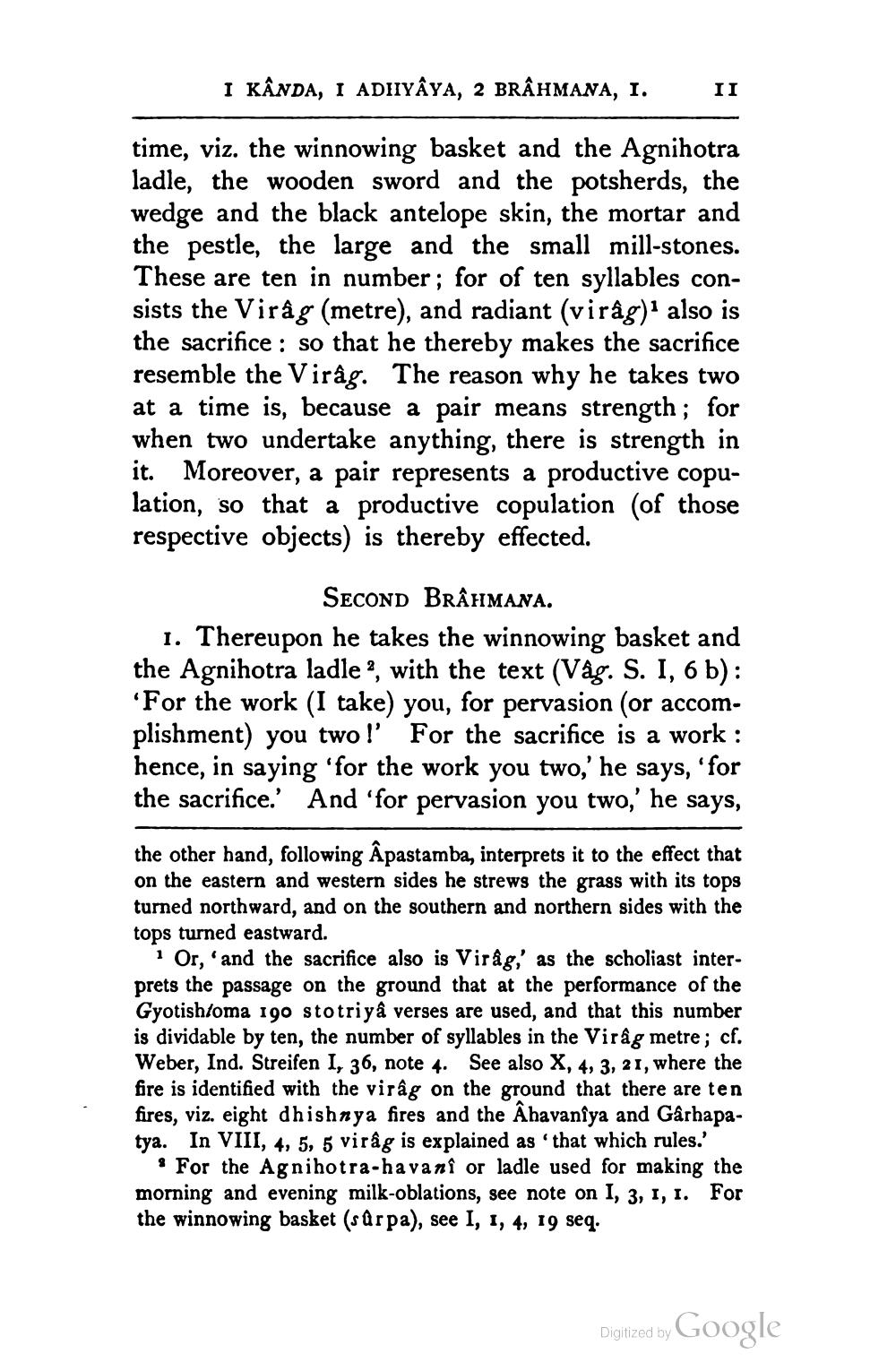________________
I KÂNDA, I ADIIYÂYA, 2 BRÂHMANA, I.
II
time, viz. the winnowing basket and the Agnihotra ladle, the wooden sword and the potsherds, the wedge and the black antelope skin, the mortar and the pestle, the large and the small mill-stones. These are ten in number; for of ten syllables consists the Virag (metre), and radiant (virág): also is the sacrifice : so that he thereby makes the sacrifice resemble the Virâg. The reason why he takes two at a time is, because a pair means strength; for when two undertake anything, there is strength in it. Moreover, a pair represents a productive copulation, so that a productive copulation (of those respective objects) is thereby effected.
SECOND BRAHMANA. 1. Thereupon he takes the winnowing basket and the Agnihotra ladle 2, with the text (Vág. S. I, 6 b): 'For the work (I take) you, for pervasion (or accomplishment) you two ! For the sacrifice is a work : hence, in saying for the work you two,' he says, 'for the sacrifice.' And 'for pervasion you two,' he says,
the other hand, following Âpastamba, interprets it to the effect that on the eastern and western sides he strews the grass with its tops turned northward, and on the southern and northern sides with the tops turned eastward.
i Or, and the sacrifice also is Viråg; as the scholiast interprets the passage on the ground that at the performance of the Gyotish/oma 190 stotriyâ verses are used, and that this number is dividable by ten, the number of syllables in the Virâg metre; cf. Weber, Ind. Streifen I, 36, note 4. See also X, 4, 3, 21, where the fire is identified with the virag on the ground that there are ten fires, viz. eight dhishnya fires and the Ahavanîya and Garhapatya. In VIII, 4, 5, 5 virag is explained as that which rules.'
. For the Agnihotra-havanî or ladle used for making the morning and evening milk-oblations, see note on I, 3, 1, 1. For the winnowing basket (sûr pa), see I, 1, 4, 19 seq.
Digitized by Google




